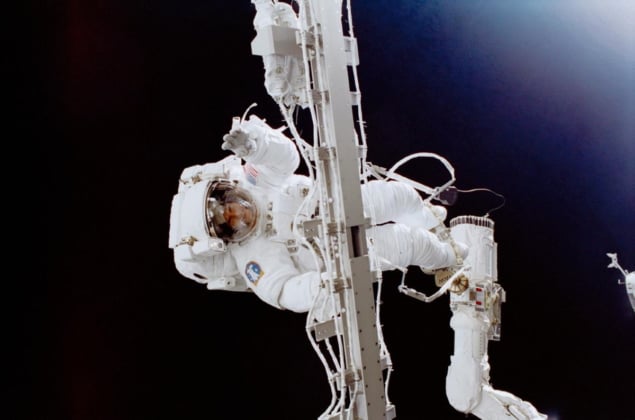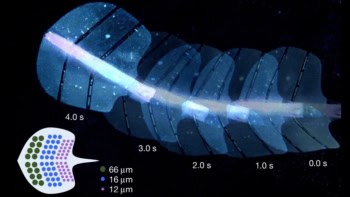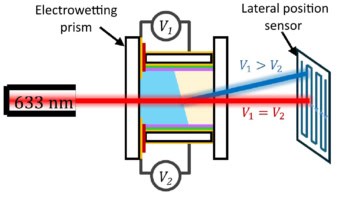
For astronauts, staying healthy while in orbit is a top priority. The human body simply isn’t built for outer space: long-term exposure to microgravity can result in muscle loss, weaken bones and even shorten eyeballs. But what happens to an astronaut’s brain once they leave Earth behind?
Research published in JAMA Neurology suggests that long-duration spaceflight could cause minor brain damage and accelerate neurodegeneration. The pilot study, led by senior authors Henrik Zetterberg of the University of Gothenburg and Alexander Choukér of the Ludwig-Maximilians University Munich, followed five Russian cosmonauts onboard the International Space Station. By tracking the concentration of brain-specific proteins before and after the space mission, the researchers concluded that long-term spaceflight presents a slight, but lasting, threat to neurological health. The results may have ramifications for future space missions, including manned journeys to Mars.
“This [brain cell damage] must be explored further and prevented if space travel is to become more common in the future,” says Zetterberg.
Blood-based biomarkers expose brain injuries
The cosmonauts – five men with an average age of 49 – spent almost half a year in space. The researchers took blood samples from the participants both pre-flight (20 days before launch) and post-flight (one day, one week and three weeks after landing). Using single molecule array testing, a technique sensitive enough to detect proteins at the femtogram per millilitre level, they studied the concentration at each time point of five blood-based brain biomarkers: neurofilament light (NfL), glial fibrillary acidic protein (GFAP), total tau and the amyloid-beta proteins Aβ40 and Aβ42.
These proteins shed light on the structural integrity of brain tissue. Increased levels of NfL in the cerebrospinal fluid or blood, for example, are associated with damage to the brain’s connecting fibres, the axons. Meanwhile, amyloid-beta proteins are considered a hallmark of neurodegenerative disease and the aging brain.
To determine biomarker trends, the researchers looked at the mean group response for the five cosmonauts. They found that NfL, GFAP and Aβ40 levels were significantly elevated upon the cosmonaut’s return to Earth, even after three weeks. All three biomarkers reached peak concentration one week after landing. Notably, correlation analysis uncovered a three-way association between each protein concentration over the time course of the study. This suggests that long-term trips to space trigger a widespread response from different types of functional tissue in the brain.
“All relevant tissue types of the brain seem to be affected,” says corresponding author Peter zu Eulenburg, who conceived the idea for the study.

Taken together, the results could reflect the brain’s response to prolonged fluid redistribution during spaceflight and its subsequent restoration back on Earth. Moreover, this response appears to continue for weeks post-flight, as the effective half-life of each biomarker is considerably less than three weeks.
Follow-up studies on Earth
While the pilot study uncovered the damage that long-term missions could inflict on the brain, the question remains as to how and why this damage occurs.

MRI reveals long-term effects of space travel on the brain
“Is it being weightless, changes in brain fluid, stressors associated with launch and landing, or is it caused by something else?” asks Zetterberg. Fortunately, there is plenty of scope for the research to continue back on Earth.
“There are several space analogue environments on Earth,” zu Eulenburg tells Physics World. “This includes social isolation studies in Antarctica and parabolic flight campaigns to investigate gravitational transitions from micro- to hyper-gravity [gravitational force higher than on Earth].”



